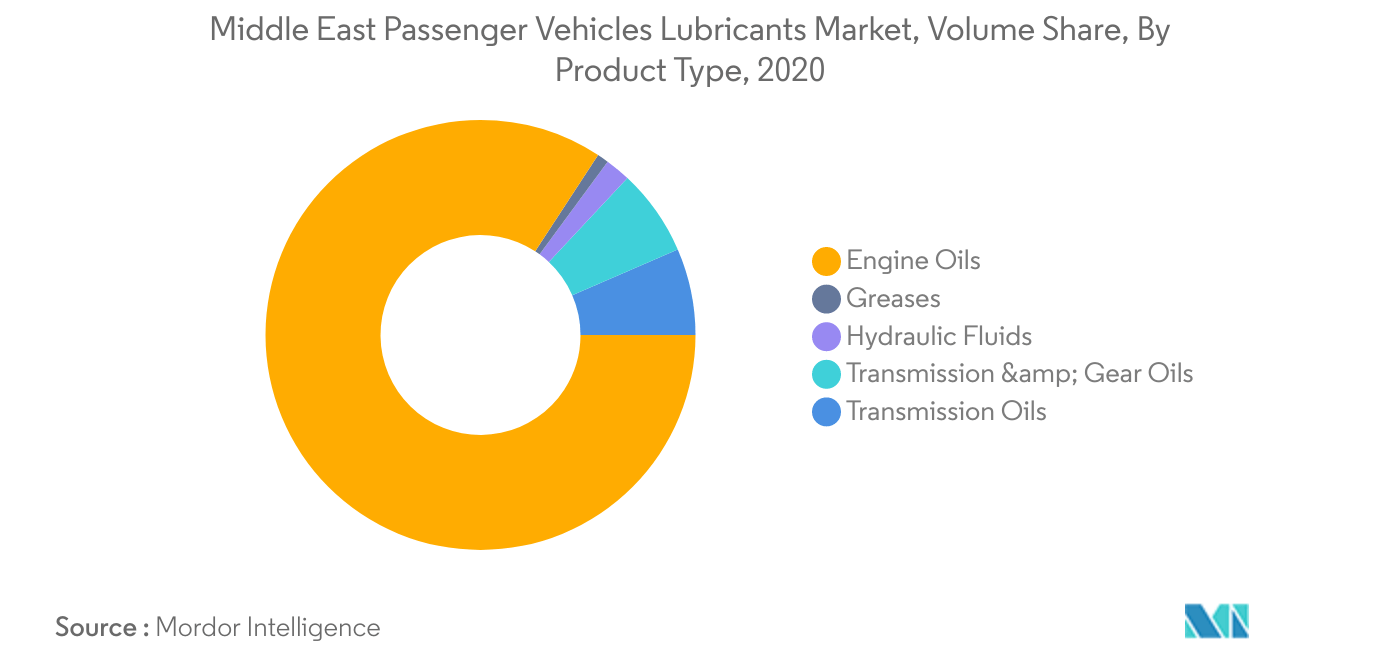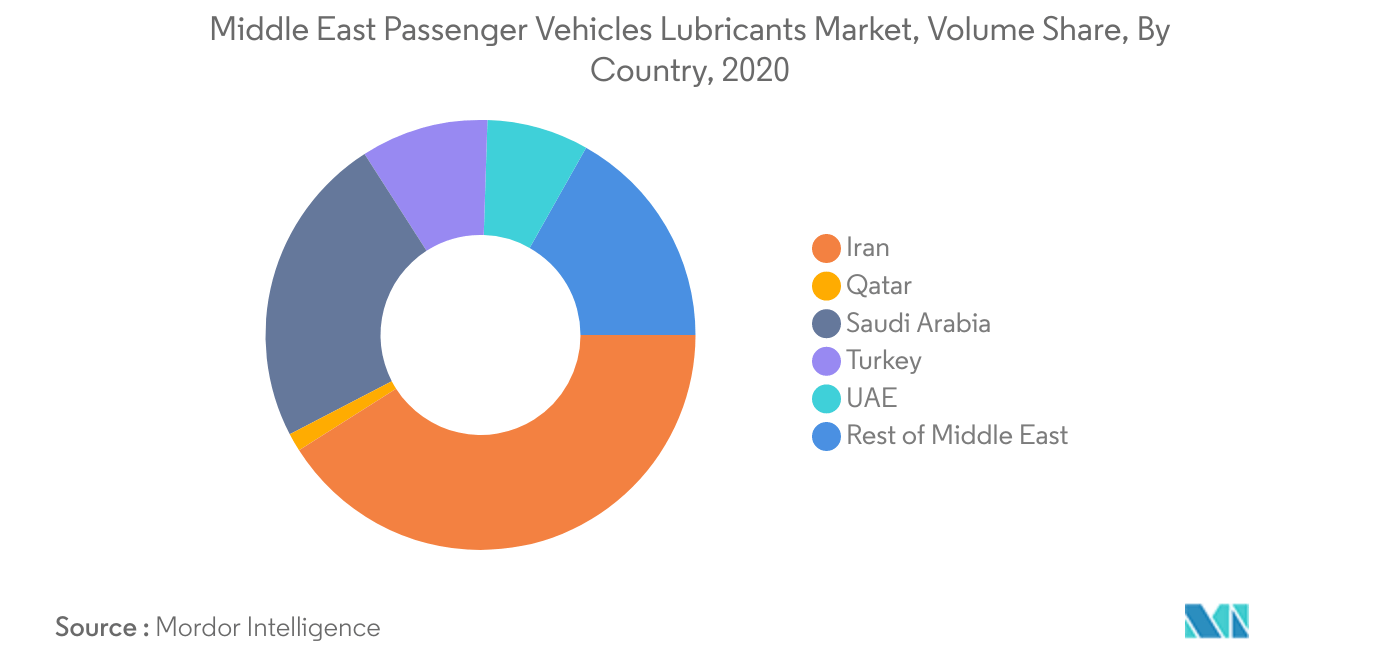Market Trends of Middle East Passenger Vehicles Lubricants Industry
This section covers the major market trends shaping the Middle East Passenger Vehicles Lubricants Market according to our research experts:
Largest Segment By Product Type : <span style="font-family: 'regular_bold';color:#0e7db3;">Engine Oils</span>
- During 2015-2019, the lubricant consumption in the Middle East passenger vehicle (PV) sector increased at a CAGR of 2.6%. Engine oil was the dominating lubricant product type in this sector which accounted for a share of nearly 90% in lubricant consumption of this sector in 2020. Engine oil is followed by transmission oils which accounted for 6.97% of the lubricant consumption in 2020.
- In 2020, post the COVID-19 outbreak, the usage of passenger cars significantly dropped due to the restrictions put in place as a response to the pandemic. As a result, automotive lubricant consumption in this sector fell by nearly 6.9%, in comparison to 2019.
- The expected recovery in production and sales of new passenger vehicles is likely to drive the lubricant consumption in this sector. As a result, the PV lubricant consumption is likely to grow at a CAGR of 3.38% during 2021-2026.

Largest Country : <span style="font-family: 'regular_bold';color:#0e7db3;">Iran</span>
- In the Middle Eastern region, lubricant consumption by passenger vehicles (PV) was the highest in Iran, followed by Saudi Arabia and Turkey. In 2020, Iran accounted for 40.9% of the total PV lubricant consumption in the region, whereas Saudi Arabia and Turkey accounted for 23.5% and 9.6% shares, respectively.
- The decreased usage of passenger vehicles after the COVID-19 pandemic negatively affected the PV lubricant consumption across the region in 2020. The United Arab Emirates was the most affected, as it witnessed a 12.9% drop in consumption during 2019-2020, followed by Qatar, which witnessed an 8.3% drop.
- During 2021-2026, Turkey is likely to be the fastest-growing PV lubricant market, as its consumption is likely to register a CAGR of 7.91%, followed by Qatar and Saudi Arabia, which are expected to witness a CAGR of 4.14% and 3%, respectively.


